BORN OF INFORMALISMO: MARTA MINUJÍN AND THE NASCENT BODY OF PERFORMANCE
The Institute for Studies on Latin American Art (ISLAA) announced the opening of Born of Informalismo: Marta Minujín and the Nascent Body of Performance, curated by Michaëla de Lacaze Mohrmann. The third in a series of exhibitions on Latin American modernism and its legacies, this show examines the early work of trailblazing Argentine artist Marta Minujín (b. 1943), tracing her trajectory from informalist painting and sculpture to performance.
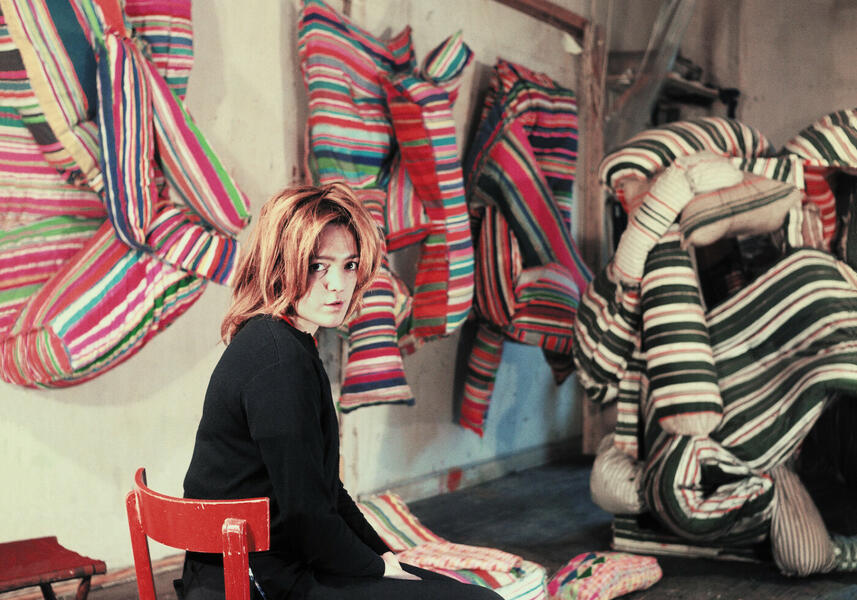
Presenting three of Minujín's informalist paintings alongside exhibition catalogues, photographs of sculptures, and documentation of her 1963 happening La destrucción, this exhibition highlights Informalismo's importance as a key conduit for Argentine experimental art of the 1960s. Whereas many accounts of the movement have focused on the production of a small contingent of male artists, this show encourages a reconsideration of Informalismo's heterogeneity, transnational context, and sociopolitical framework through Minujín's work, paving the way for additional research into its role in twentieth-century Latin American art.
A form of expressive abstraction characterized by the gestural application of paint, informalist painting emerged in Europe in the late 1940s and gradually flourished around the globe. By 1956, it had taken hold in Buenos Aires, where its proponents produced relief-like paintings that incorporated a somber color palette and the extra-artistic materials of everyday life, from rags to rusted cans. Evocative of the harsh realities of daily life and a general postwar malaise, Argentine Informalismo embraced ugliness, spontaneity, violence, and irrationality in a decisive break with the mathematically precise logic of the country's preceding avant-gardes.
For Minujín, who adopted Informalismo's lexicon of earthy colors, found items, and textural impastos to convey the passage of time, the style offered a crucial platform for testing out ideas regarding the body and action in art. Paintings such as Gran mancha (ca. 1959), Mancha (1960), and Homenaje a Greco (1961), composed of thick layers of smeared and speckled oils, evince the effects of aging through their cracked skin-like surfaces. Minujín's subsequent informalist sculptures of the early 1960s marked a transition into three dimensions by constructing discarded mattresses and cardboard into fragile anthropomorphic and embodied forms.
These experiments in painting and sculpture coincided with Minujín's early performances, setting the stage for her first full-scale happening, La destrucción—a pivotal piece, produced in Paris, in which she destroyed her sculptures in a ceremonial conflagration. Minujín abandoned the informalist idiom in 1963, going on to produce groundbreaking work in installation, performance, and time-based media—from La menesunda to Simultaneidad en simultaneidad—in the following years.
-
Unidentified photographer, Photograph of Marta Minujín with one of her sculptures shown in El hombre antes del hombre: exposición de cosas (Man Before Man: Exhibition of Things), 1962. Courtesy Marta Minujín Archive
-
Unidentified photographer, Photograph of untitled sculpture from Marta Minujín's Cartones (Cardboards) series, 1961–62. Courtesy Marta Minujín Archive
-
Unidentified photographer, Photograph of Marta Minujín with one of her sculptures shown in El hombre antes del hombre: exposición de cosas (Man Before Man: Exhibition of Things), 1962. Courtesy Marta Minujín Archive
-
Harry Shunk and János Kender, Photograph of La destrucción (The Destruction) by Marta Minujín, 1963. © J. Paul Getty Trust. Getty Research Institute, Los Angeles (2014.R.20)
-
Harry Shunk and János Kender, Photograph of La destrucción (The Destruction) by Marta Minujín, 1963. © J. Paul Getty Trust. Getty Research Institute, Los Angeles (2014.R.20)
-
Unidentified photographer, Photograph of Marta Minujín with her sculptures from Eróticos en Technicolor (Erotica in Technicolor) in her Paris studio, 1963. © Marta Minujín Archive
Until June 3rd, 2022
Institute for Studies on Latin American Art (ISLAA)
50 East 78th Street. New York, New York 10075
United States
Related Topics
May interest you
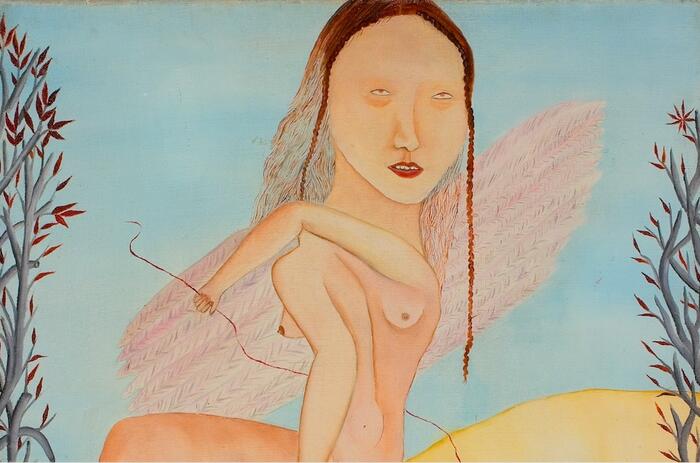
The Miguel Urrutia Art Museum of the Banco de la República presents the exhibition Veroír el fracaso iluminado (Seehearing the Enlightened Failure), a retrospective that brings together more than 100 works by the Chilean artist Cecilia Vicuña, whose work addresses issues such as the environment, feminism, human rights humans, decolonization and the relationship between art and politics. The exhibition, curated by Miguel López, one of the most outstanding curators on the current Latin American art scene, arrives in Colombia thanks to the collaboration between the Kunstinstituut Melly (Rotterdam) and the Banco de la República.
CECILIA VICUÑA. SEEHEARING THE ENLIGHTENED FAILURE
The Miguel Urrutia Art Museum of the Banco de la República presents the exhibition Veroír el fracaso iluminado (Seehearing the Enlightened Failure), a retrospective that brings together more than 100 works by the Chilean artist Cecilia Vicuña, whose work addresses issues such as the environment, feminism, human rights humans, decolonization and the relationship between art and politics. The exhibition, curated by Miguel López, one of the most outstanding curators on the current Latin American art scene, arrives in Colombia thanks to the collaboration between the Kunstinstituut Melly (Rotterdam) and the Banco de la República.

The Miguel Urrutia Art Museum of the Banco de la República presents the exhibition Veroír el fracaso iluminado (Seehearing the Enlightened Failure), a retrospective that brings together more than 100 works by the Chilean artist Cecilia Vicuña, whose work addresses issues such as the environment, feminism, human rights humans, decolonization and the relationship between art and politics. The exhibition, curated by Miguel López, one of the most outstanding curators on the current Latin American art scene, arrives in Colombia thanks to the collaboration between the Kunstinstituut Melly (Rotterdam) and the Banco de la República.
CECILIA VICUÑA. SEEHEARING THE ENLIGHTENED FAILURE
The Miguel Urrutia Art Museum of the Banco de la República presents the exhibition Veroír el fracaso iluminado (Seehearing the Enlightened Failure), a retrospective that brings together more than 100 works by the Chilean artist Cecilia Vicuña, whose work addresses issues such as the environment, feminism, human rights humans, decolonization and the relationship between art and politics. The exhibition, curated by Miguel López, one of the most outstanding curators on the current Latin American art scene, arrives in Colombia thanks to the collaboration between the Kunstinstituut Melly (Rotterdam) and the Banco de la República.
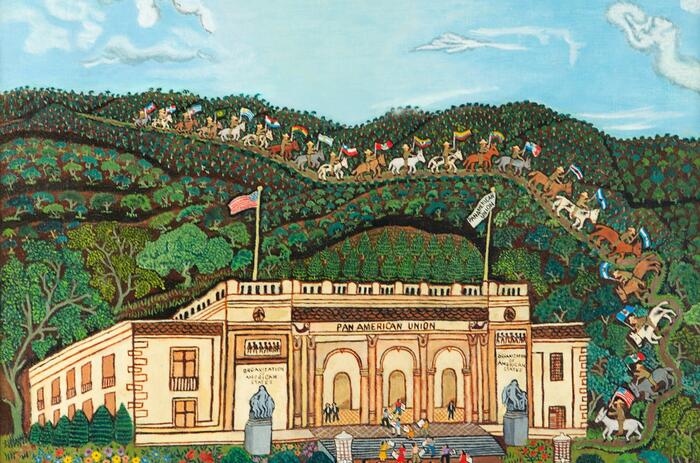
Popular Painters and Other Visionaries examines the practices of 35 artists working on the margins of modernism and the mainstream art world throughout the Americas around the mid-20th century.
NEW YORK - EL MUSEO DEL BARRIO EXHIBITS POPULAR PAINTERS & OTHER VISIONARIES
Popular Painters and Other Visionaries examines the practices of 35 artists working on the margins of modernism and the mainstream art world throughout the Americas around the mid-20th century.
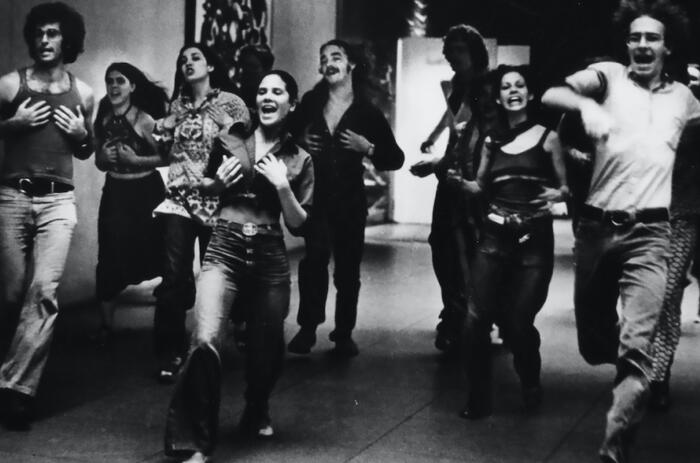
Americas Society presents the second part of This Must Be the Place: Latin American Artists in New York, 1965–1975, a group exhibition that explores the artworks, performances, and experimental practices of this generation of artists who lived in New York City in the 1960s and 1970s. Diversifying the city’s artistic life, these artists helped shape New York into the global art center it is today.
PART II: LATIN AMERICAN ARTISTS IN NEW YORK – AMERICAS SOCIETY’S EXHIBITION
Americas Society presents the second part of This Must Be the Place: Latin American Artists in New York, 1965–1975, a group exhibition that explores the artworks, performances, and experimental practices of this generation of artists who lived in New York City in the 1960s and 1970s. Diversifying the city’s artistic life, these artists helped shape New York into the global art center it is today.
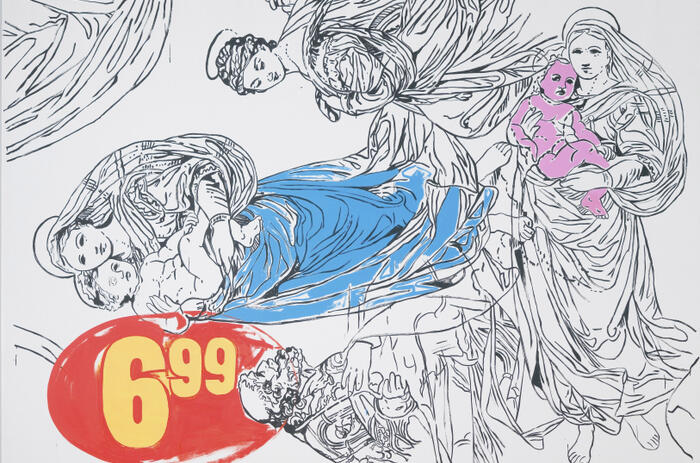
Presenting more than one hundred works—from iconic paintings such as The Last Supper to archival materials, drawings, prints, film, and rarely seen and newly discovered items—Andy Warhol: Revelation brings a fresh perspective to the canonical artist, exploring his career-long engagement with Catholic themes, as well as the tension between Warhol’s spiritual upbringing and his life as an out gay man.
CATHOLIC, BOUNDARY-BREAKING ANDY WARHOL
Presenting more than one hundred works—from iconic paintings such as The Last Supper to archival materials, drawings, prints, film, and rarely seen and newly discovered items—Andy Warhol: Revelation brings a fresh perspective to the canonical artist, exploring his career-long engagement with Catholic themes, as well as the tension between Warhol’s spiritual upbringing and his life as an out gay man.
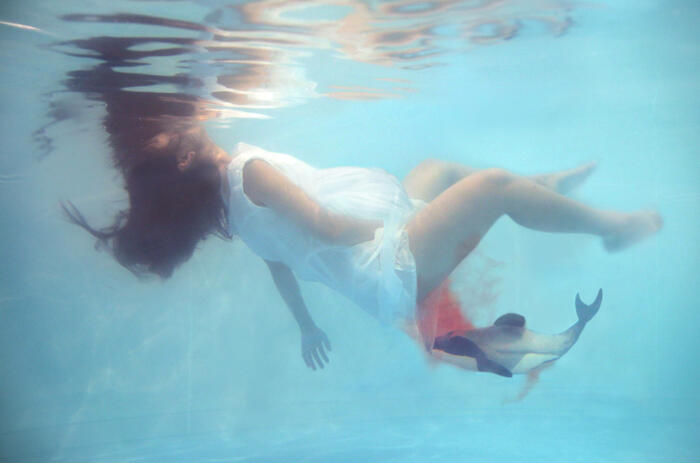
Stockholm syndrome occurs when a victim establishes an emotional bond with their captors. With motherhood many women feel like this: their life is no longer theirs and escaping is impossible. However, the kidnappers are not the daughters or the sons. The perpetrator is the patriarchal system that, under the story of love, hides the tasks that sustain life while exploiting them. The works exhibited here reveal motherhood as a disputed concept. On one side is the violence of labor and legal demands; on the other, the struggles that intertwine like a tide around the need for reproductive rights and care strategies that escape capitalist accumulation. This is an example of the enormous political power of motherhood.
MUAC EXHIBITS “MOTHERING. BETWEEN STOCKHOLM SYNDROME AND ACTS OF PRODUCTION”
Stockholm syndrome occurs when a victim establishes an emotional bond with their captors. With motherhood many women feel like this: their life is no longer theirs and escaping is impossible. However, the kidnappers are not the daughters or the sons. The perpetrator is the patriarchal system that, under the story of love, hides the tasks that sustain life while exploiting them. The works exhibited here reveal motherhood as a disputed concept. On one side is the violence of labor and legal demands; on the other, the struggles that intertwine like a tide around the need for reproductive rights and care strategies that escape capitalist accumulation. This is an example of the enormous political power of motherhood.
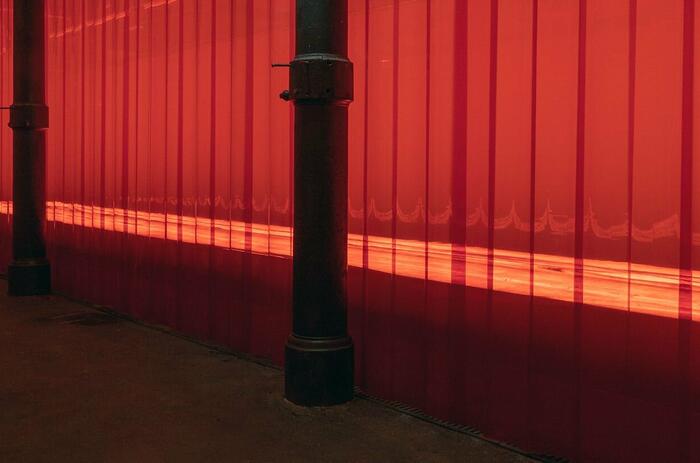
Mexican artist, Teresa Margolles, transfers the space of death to the sphere of art, a metaphor par excellence of the border, of a limit that paradoxically is reached only when we are no longer and, therefore, we will no longer be able to tell it. An attempt to counter addiction and impotence in the face of daily tragedies such as gender violence or the exploitation of illegal immigration, caused by the inaction of governments and by a melodramatic or sensationalistic media exploitation.
THE PERIPHERY OF THE AGONY: TERESA MARGOLLES
Mexican artist, Teresa Margolles, transfers the space of death to the sphere of art, a metaphor par excellence of the border, of a limit that paradoxically is reached only when we are no longer and, therefore, we will no longer be able to tell it. An attempt to counter addiction and impotence in the face of daily tragedies such as gender violence or the exploitation of illegal immigration, caused by the inaction of governments and by a melodramatic or sensationalistic media exploitation.
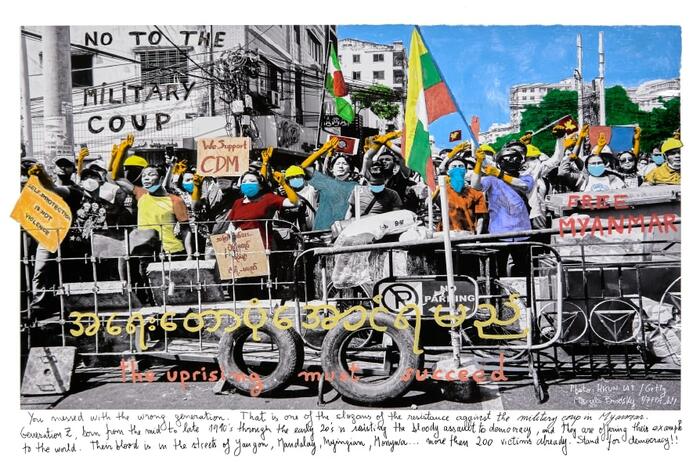
Organized by Human Rights Art Initiative and art+château, this photographic exhibition in Zurich features artist and human rights activist Marcelo Brodsky (b. 1954, Buenos Aires, Argentina) along with video works and a performance by Ko Latt, Yadanar Win, Lily and Zoncy, who represent the new generation of Burmese artists and whose work reveal elements of Myanmar’s social, political, and cultural narrative. Curated by Giulia Busetti and Dr. Valentina Locatelli.
MARCELO BRODSKY EXHIBITS “STAND FOR DEMOCRACY: MYANMAR”
Organized by Human Rights Art Initiative and art+château, this photographic exhibition in Zurich features artist and human rights activist Marcelo Brodsky (b. 1954, Buenos Aires, Argentina) along with video works and a performance by Ko Latt, Yadanar Win, Lily and Zoncy, who represent the new generation of Burmese artists and whose work reveal elements of Myanmar’s social, political, and cultural narrative. Curated by Giulia Busetti and Dr. Valentina Locatelli.
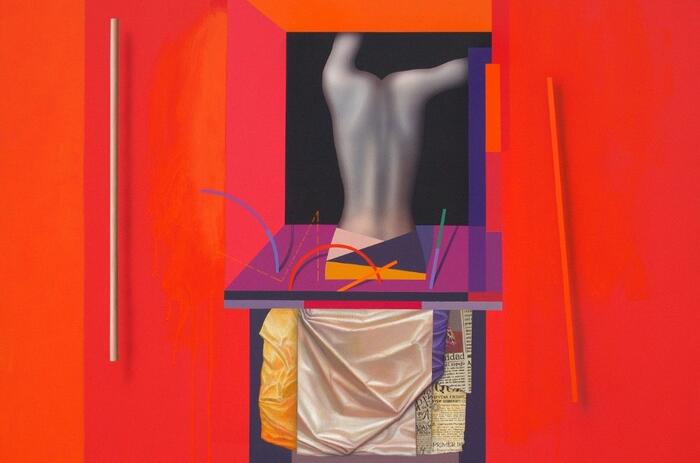
The ninth edition of PArC, Perú Arte Contemporáneo, will take place between April 20th and 24th, 2022. Integrated into the Pinta universe, the most relevant international art fair in Peru is characterized by an experimental program and a selection of galleries with diverse and contemporary proposals. Pinta PArC, positioned among the most relevant cultural exchange platforms in the region, can be visited at Casa Prado (Av. 28 de Julio 878, Miraflores). For more information: www.parc.pinta.art
PINTA PArC ANNOUNCES ITS 2022 EDITION WITH ENTHUSIASM AND AMBITION
The ninth edition of PArC, Perú Arte Contemporáneo, will take place between April 20th and 24th, 2022. Integrated into the Pinta universe, the most relevant international art fair in Peru is characterized by an experimental program and a selection of galleries with diverse and contemporary proposals. Pinta PArC, positioned among the most relevant cultural exchange platforms in the region, can be visited at Casa Prado (Av. 28 de Julio 878, Miraflores). For more information: www.parc.pinta.art

The Miguel Urrutia Art Museum of the Banco de la República presents the exhibition Veroír el fracaso iluminado (Seehearing the Enlightened Failure), a retrospective that brings together more than 100 works by the Chilean artist Cecilia Vicuña, whose work addresses issues such as the environment, feminism, human rights humans, decolonization and the relationship between art and politics. The exhibition, curated by Miguel López, one of the most outstanding curators on the current Latin American art scene, arrives in Colombia thanks to the collaboration between the Kunstinstituut Melly (Rotterdam) and the Banco de la República.
CECILIA VICUÑA. SEEHEARING THE ENLIGHTENED FAILURE
The Miguel Urrutia Art Museum of the Banco de la República presents the exhibition Veroír el fracaso iluminado (Seehearing the Enlightened Failure), a retrospective that brings together more than 100 works by the Chilean artist Cecilia Vicuña, whose work addresses issues such as the environment, feminism, human rights humans, decolonization and the relationship between art and politics. The exhibition, curated by Miguel López, one of the most outstanding curators on the current Latin American art scene, arrives in Colombia thanks to the collaboration between the Kunstinstituut Melly (Rotterdam) and the Banco de la República.

Popular Painters and Other Visionaries examines the practices of 35 artists working on the margins of modernism and the mainstream art world throughout the Americas around the mid-20th century.
NEW YORK - EL MUSEO DEL BARRIO EXHIBITS POPULAR PAINTERS & OTHER VISIONARIES
Popular Painters and Other Visionaries examines the practices of 35 artists working on the margins of modernism and the mainstream art world throughout the Americas around the mid-20th century.

Americas Society presents the second part of This Must Be the Place: Latin American Artists in New York, 1965–1975, a group exhibition that explores the artworks, performances, and experimental practices of this generation of artists who lived in New York City in the 1960s and 1970s. Diversifying the city’s artistic life, these artists helped shape New York into the global art center it is today.
PART II: LATIN AMERICAN ARTISTS IN NEW YORK – AMERICAS SOCIETY’S EXHIBITION
Americas Society presents the second part of This Must Be the Place: Latin American Artists in New York, 1965–1975, a group exhibition that explores the artworks, performances, and experimental practices of this generation of artists who lived in New York City in the 1960s and 1970s. Diversifying the city’s artistic life, these artists helped shape New York into the global art center it is today.

Presenting more than one hundred works—from iconic paintings such as The Last Supper to archival materials, drawings, prints, film, and rarely seen and newly discovered items—Andy Warhol: Revelation brings a fresh perspective to the canonical artist, exploring his career-long engagement with Catholic themes, as well as the tension between Warhol’s spiritual upbringing and his life as an out gay man.
CATHOLIC, BOUNDARY-BREAKING ANDY WARHOL
Presenting more than one hundred works—from iconic paintings such as The Last Supper to archival materials, drawings, prints, film, and rarely seen and newly discovered items—Andy Warhol: Revelation brings a fresh perspective to the canonical artist, exploring his career-long engagement with Catholic themes, as well as the tension between Warhol’s spiritual upbringing and his life as an out gay man.

Stockholm syndrome occurs when a victim establishes an emotional bond with their captors. With motherhood many women feel like this: their life is no longer theirs and escaping is impossible. However, the kidnappers are not the daughters or the sons. The perpetrator is the patriarchal system that, under the story of love, hides the tasks that sustain life while exploiting them. The works exhibited here reveal motherhood as a disputed concept. On one side is the violence of labor and legal demands; on the other, the struggles that intertwine like a tide around the need for reproductive rights and care strategies that escape capitalist accumulation. This is an example of the enormous political power of motherhood.
MUAC EXHIBITS “MOTHERING. BETWEEN STOCKHOLM SYNDROME AND ACTS OF PRODUCTION”
Stockholm syndrome occurs when a victim establishes an emotional bond with their captors. With motherhood many women feel like this: their life is no longer theirs and escaping is impossible. However, the kidnappers are not the daughters or the sons. The perpetrator is the patriarchal system that, under the story of love, hides the tasks that sustain life while exploiting them. The works exhibited here reveal motherhood as a disputed concept. On one side is the violence of labor and legal demands; on the other, the struggles that intertwine like a tide around the need for reproductive rights and care strategies that escape capitalist accumulation. This is an example of the enormous political power of motherhood.

Mexican artist, Teresa Margolles, transfers the space of death to the sphere of art, a metaphor par excellence of the border, of a limit that paradoxically is reached only when we are no longer and, therefore, we will no longer be able to tell it. An attempt to counter addiction and impotence in the face of daily tragedies such as gender violence or the exploitation of illegal immigration, caused by the inaction of governments and by a melodramatic or sensationalistic media exploitation.
THE PERIPHERY OF THE AGONY: TERESA MARGOLLES
Mexican artist, Teresa Margolles, transfers the space of death to the sphere of art, a metaphor par excellence of the border, of a limit that paradoxically is reached only when we are no longer and, therefore, we will no longer be able to tell it. An attempt to counter addiction and impotence in the face of daily tragedies such as gender violence or the exploitation of illegal immigration, caused by the inaction of governments and by a melodramatic or sensationalistic media exploitation.

Organized by Human Rights Art Initiative and art+château, this photographic exhibition in Zurich features artist and human rights activist Marcelo Brodsky (b. 1954, Buenos Aires, Argentina) along with video works and a performance by Ko Latt, Yadanar Win, Lily and Zoncy, who represent the new generation of Burmese artists and whose work reveal elements of Myanmar’s social, political, and cultural narrative. Curated by Giulia Busetti and Dr. Valentina Locatelli.
MARCELO BRODSKY EXHIBITS “STAND FOR DEMOCRACY: MYANMAR”
Organized by Human Rights Art Initiative and art+château, this photographic exhibition in Zurich features artist and human rights activist Marcelo Brodsky (b. 1954, Buenos Aires, Argentina) along with video works and a performance by Ko Latt, Yadanar Win, Lily and Zoncy, who represent the new generation of Burmese artists and whose work reveal elements of Myanmar’s social, political, and cultural narrative. Curated by Giulia Busetti and Dr. Valentina Locatelli.

The ninth edition of PArC, Perú Arte Contemporáneo, will take place between April 20th and 24th, 2022. Integrated into the Pinta universe, the most relevant international art fair in Peru is characterized by an experimental program and a selection of galleries with diverse and contemporary proposals. Pinta PArC, positioned among the most relevant cultural exchange platforms in the region, can be visited at Casa Prado (Av. 28 de Julio 878, Miraflores). For more information: www.parc.pinta.art
PINTA PArC ANNOUNCES ITS 2022 EDITION WITH ENTHUSIASM AND AMBITION
The ninth edition of PArC, Perú Arte Contemporáneo, will take place between April 20th and 24th, 2022. Integrated into the Pinta universe, the most relevant international art fair in Peru is characterized by an experimental program and a selection of galleries with diverse and contemporary proposals. Pinta PArC, positioned among the most relevant cultural exchange platforms in the region, can be visited at Casa Prado (Av. 28 de Julio 878, Miraflores). For more information: www.parc.pinta.art

The Miguel Urrutia Art Museum of the Banco de la República presents the exhibition Veroír el fracaso iluminado (Seehearing the Enlightened Failure), a retrospective that brings together more than 100 works by the Chilean artist Cecilia Vicuña, whose work addresses issues such as the environment, feminism, human rights humans, decolonization and the relationship between art and politics. The exhibition, curated by Miguel López, one of the most outstanding curators on the current Latin American art scene, arrives in Colombia thanks to the collaboration between the Kunstinstituut Melly (Rotterdam) and the Banco de la República.
CECILIA VICUÑA. SEEHEARING THE ENLIGHTENED FAILURE
The Miguel Urrutia Art Museum of the Banco de la República presents the exhibition Veroír el fracaso iluminado (Seehearing the Enlightened Failure), a retrospective that brings together more than 100 works by the Chilean artist Cecilia Vicuña, whose work addresses issues such as the environment, feminism, human rights humans, decolonization and the relationship between art and politics. The exhibition, curated by Miguel López, one of the most outstanding curators on the current Latin American art scene, arrives in Colombia thanks to the collaboration between the Kunstinstituut Melly (Rotterdam) and the Banco de la República.

Popular Painters and Other Visionaries examines the practices of 35 artists working on the margins of modernism and the mainstream art world throughout the Americas around the mid-20th century.
NEW YORK - EL MUSEO DEL BARRIO EXHIBITS POPULAR PAINTERS & OTHER VISIONARIES
Popular Painters and Other Visionaries examines the practices of 35 artists working on the margins of modernism and the mainstream art world throughout the Americas around the mid-20th century.

Americas Society presents the second part of This Must Be the Place: Latin American Artists in New York, 1965–1975, a group exhibition that explores the artworks, performances, and experimental practices of this generation of artists who lived in New York City in the 1960s and 1970s. Diversifying the city’s artistic life, these artists helped shape New York into the global art center it is today.
PART II: LATIN AMERICAN ARTISTS IN NEW YORK – AMERICAS SOCIETY’S EXHIBITION
Americas Society presents the second part of This Must Be the Place: Latin American Artists in New York, 1965–1975, a group exhibition that explores the artworks, performances, and experimental practices of this generation of artists who lived in New York City in the 1960s and 1970s. Diversifying the city’s artistic life, these artists helped shape New York into the global art center it is today.

Presenting more than one hundred works—from iconic paintings such as The Last Supper to archival materials, drawings, prints, film, and rarely seen and newly discovered items—Andy Warhol: Revelation brings a fresh perspective to the canonical artist, exploring his career-long engagement with Catholic themes, as well as the tension between Warhol’s spiritual upbringing and his life as an out gay man.
CATHOLIC, BOUNDARY-BREAKING ANDY WARHOL
Presenting more than one hundred works—from iconic paintings such as The Last Supper to archival materials, drawings, prints, film, and rarely seen and newly discovered items—Andy Warhol: Revelation brings a fresh perspective to the canonical artist, exploring his career-long engagement with Catholic themes, as well as the tension between Warhol’s spiritual upbringing and his life as an out gay man.

Stockholm syndrome occurs when a victim establishes an emotional bond with their captors. With motherhood many women feel like this: their life is no longer theirs and escaping is impossible. However, the kidnappers are not the daughters or the sons. The perpetrator is the patriarchal system that, under the story of love, hides the tasks that sustain life while exploiting them. The works exhibited here reveal motherhood as a disputed concept. On one side is the violence of labor and legal demands; on the other, the struggles that intertwine like a tide around the need for reproductive rights and care strategies that escape capitalist accumulation. This is an example of the enormous political power of motherhood.
MUAC EXHIBITS “MOTHERING. BETWEEN STOCKHOLM SYNDROME AND ACTS OF PRODUCTION”
Stockholm syndrome occurs when a victim establishes an emotional bond with their captors. With motherhood many women feel like this: their life is no longer theirs and escaping is impossible. However, the kidnappers are not the daughters or the sons. The perpetrator is the patriarchal system that, under the story of love, hides the tasks that sustain life while exploiting them. The works exhibited here reveal motherhood as a disputed concept. On one side is the violence of labor and legal demands; on the other, the struggles that intertwine like a tide around the need for reproductive rights and care strategies that escape capitalist accumulation. This is an example of the enormous political power of motherhood.

Mexican artist, Teresa Margolles, transfers the space of death to the sphere of art, a metaphor par excellence of the border, of a limit that paradoxically is reached only when we are no longer and, therefore, we will no longer be able to tell it. An attempt to counter addiction and impotence in the face of daily tragedies such as gender violence or the exploitation of illegal immigration, caused by the inaction of governments and by a melodramatic or sensationalistic media exploitation.
THE PERIPHERY OF THE AGONY: TERESA MARGOLLES
Mexican artist, Teresa Margolles, transfers the space of death to the sphere of art, a metaphor par excellence of the border, of a limit that paradoxically is reached only when we are no longer and, therefore, we will no longer be able to tell it. An attempt to counter addiction and impotence in the face of daily tragedies such as gender violence or the exploitation of illegal immigration, caused by the inaction of governments and by a melodramatic or sensationalistic media exploitation.

Organized by Human Rights Art Initiative and art+château, this photographic exhibition in Zurich features artist and human rights activist Marcelo Brodsky (b. 1954, Buenos Aires, Argentina) along with video works and a performance by Ko Latt, Yadanar Win, Lily and Zoncy, who represent the new generation of Burmese artists and whose work reveal elements of Myanmar’s social, political, and cultural narrative. Curated by Giulia Busetti and Dr. Valentina Locatelli.
MARCELO BRODSKY EXHIBITS “STAND FOR DEMOCRACY: MYANMAR”
Organized by Human Rights Art Initiative and art+château, this photographic exhibition in Zurich features artist and human rights activist Marcelo Brodsky (b. 1954, Buenos Aires, Argentina) along with video works and a performance by Ko Latt, Yadanar Win, Lily and Zoncy, who represent the new generation of Burmese artists and whose work reveal elements of Myanmar’s social, political, and cultural narrative. Curated by Giulia Busetti and Dr. Valentina Locatelli.

The ninth edition of PArC, Perú Arte Contemporáneo, will take place between April 20th and 24th, 2022. Integrated into the Pinta universe, the most relevant international art fair in Peru is characterized by an experimental program and a selection of galleries with diverse and contemporary proposals. Pinta PArC, positioned among the most relevant cultural exchange platforms in the region, can be visited at Casa Prado (Av. 28 de Julio 878, Miraflores). For more information: www.parc.pinta.art
PINTA PArC ANNOUNCES ITS 2022 EDITION WITH ENTHUSIASM AND AMBITION
The ninth edition of PArC, Perú Arte Contemporáneo, will take place between April 20th and 24th, 2022. Integrated into the Pinta universe, the most relevant international art fair in Peru is characterized by an experimental program and a selection of galleries with diverse and contemporary proposals. Pinta PArC, positioned among the most relevant cultural exchange platforms in the region, can be visited at Casa Prado (Av. 28 de Julio 878, Miraflores). For more information: www.parc.pinta.art

The Miguel Urrutia Art Museum of the Banco de la República presents the exhibition Veroír el fracaso iluminado (Seehearing the Enlightened Failure), a retrospective that brings together more than 100 works by the Chilean artist Cecilia Vicuña, whose work addresses issues such as the environment, feminism, human rights humans, decolonization and the relationship between art and politics. The exhibition, curated by Miguel López, one of the most outstanding curators on the current Latin American art scene, arrives in Colombia thanks to the collaboration between the Kunstinstituut Melly (Rotterdam) and the Banco de la República.
CECILIA VICUÑA. SEEHEARING THE ENLIGHTENED FAILURE
The Miguel Urrutia Art Museum of the Banco de la República presents the exhibition Veroír el fracaso iluminado (Seehearing the Enlightened Failure), a retrospective that brings together more than 100 works by the Chilean artist Cecilia Vicuña, whose work addresses issues such as the environment, feminism, human rights humans, decolonization and the relationship between art and politics. The exhibition, curated by Miguel López, one of the most outstanding curators on the current Latin American art scene, arrives in Colombia thanks to the collaboration between the Kunstinstituut Melly (Rotterdam) and the Banco de la República.

Popular Painters and Other Visionaries examines the practices of 35 artists working on the margins of modernism and the mainstream art world throughout the Americas around the mid-20th century.
NEW YORK - EL MUSEO DEL BARRIO EXHIBITS POPULAR PAINTERS & OTHER VISIONARIES
Popular Painters and Other Visionaries examines the practices of 35 artists working on the margins of modernism and the mainstream art world throughout the Americas around the mid-20th century.

Americas Society presents the second part of This Must Be the Place: Latin American Artists in New York, 1965–1975, a group exhibition that explores the artworks, performances, and experimental practices of this generation of artists who lived in New York City in the 1960s and 1970s. Diversifying the city’s artistic life, these artists helped shape New York into the global art center it is today.
PART II: LATIN AMERICAN ARTISTS IN NEW YORK – AMERICAS SOCIETY’S EXHIBITION
Americas Society presents the second part of This Must Be the Place: Latin American Artists in New York, 1965–1975, a group exhibition that explores the artworks, performances, and experimental practices of this generation of artists who lived in New York City in the 1960s and 1970s. Diversifying the city’s artistic life, these artists helped shape New York into the global art center it is today.

Presenting more than one hundred works—from iconic paintings such as The Last Supper to archival materials, drawings, prints, film, and rarely seen and newly discovered items—Andy Warhol: Revelation brings a fresh perspective to the canonical artist, exploring his career-long engagement with Catholic themes, as well as the tension between Warhol’s spiritual upbringing and his life as an out gay man.
CATHOLIC, BOUNDARY-BREAKING ANDY WARHOL
Presenting more than one hundred works—from iconic paintings such as The Last Supper to archival materials, drawings, prints, film, and rarely seen and newly discovered items—Andy Warhol: Revelation brings a fresh perspective to the canonical artist, exploring his career-long engagement with Catholic themes, as well as the tension between Warhol’s spiritual upbringing and his life as an out gay man.

Stockholm syndrome occurs when a victim establishes an emotional bond with their captors. With motherhood many women feel like this: their life is no longer theirs and escaping is impossible. However, the kidnappers are not the daughters or the sons. The perpetrator is the patriarchal system that, under the story of love, hides the tasks that sustain life while exploiting them. The works exhibited here reveal motherhood as a disputed concept. On one side is the violence of labor and legal demands; on the other, the struggles that intertwine like a tide around the need for reproductive rights and care strategies that escape capitalist accumulation. This is an example of the enormous political power of motherhood.
MUAC EXHIBITS “MOTHERING. BETWEEN STOCKHOLM SYNDROME AND ACTS OF PRODUCTION”
Stockholm syndrome occurs when a victim establishes an emotional bond with their captors. With motherhood many women feel like this: their life is no longer theirs and escaping is impossible. However, the kidnappers are not the daughters or the sons. The perpetrator is the patriarchal system that, under the story of love, hides the tasks that sustain life while exploiting them. The works exhibited here reveal motherhood as a disputed concept. On one side is the violence of labor and legal demands; on the other, the struggles that intertwine like a tide around the need for reproductive rights and care strategies that escape capitalist accumulation. This is an example of the enormous political power of motherhood.

Mexican artist, Teresa Margolles, transfers the space of death to the sphere of art, a metaphor par excellence of the border, of a limit that paradoxically is reached only when we are no longer and, therefore, we will no longer be able to tell it. An attempt to counter addiction and impotence in the face of daily tragedies such as gender violence or the exploitation of illegal immigration, caused by the inaction of governments and by a melodramatic or sensationalistic media exploitation.
THE PERIPHERY OF THE AGONY: TERESA MARGOLLES
Mexican artist, Teresa Margolles, transfers the space of death to the sphere of art, a metaphor par excellence of the border, of a limit that paradoxically is reached only when we are no longer and, therefore, we will no longer be able to tell it. An attempt to counter addiction and impotence in the face of daily tragedies such as gender violence or the exploitation of illegal immigration, caused by the inaction of governments and by a melodramatic or sensationalistic media exploitation.

Organized by Human Rights Art Initiative and art+château, this photographic exhibition in Zurich features artist and human rights activist Marcelo Brodsky (b. 1954, Buenos Aires, Argentina) along with video works and a performance by Ko Latt, Yadanar Win, Lily and Zoncy, who represent the new generation of Burmese artists and whose work reveal elements of Myanmar’s social, political, and cultural narrative. Curated by Giulia Busetti and Dr. Valentina Locatelli.
MARCELO BRODSKY EXHIBITS “STAND FOR DEMOCRACY: MYANMAR”
Organized by Human Rights Art Initiative and art+château, this photographic exhibition in Zurich features artist and human rights activist Marcelo Brodsky (b. 1954, Buenos Aires, Argentina) along with video works and a performance by Ko Latt, Yadanar Win, Lily and Zoncy, who represent the new generation of Burmese artists and whose work reveal elements of Myanmar’s social, political, and cultural narrative. Curated by Giulia Busetti and Dr. Valentina Locatelli.

The ninth edition of PArC, Perú Arte Contemporáneo, will take place between April 20th and 24th, 2022. Integrated into the Pinta universe, the most relevant international art fair in Peru is characterized by an experimental program and a selection of galleries with diverse and contemporary proposals. Pinta PArC, positioned among the most relevant cultural exchange platforms in the region, can be visited at Casa Prado (Av. 28 de Julio 878, Miraflores). For more information: www.parc.pinta.art
PINTA PArC ANNOUNCES ITS 2022 EDITION WITH ENTHUSIASM AND AMBITION
The ninth edition of PArC, Perú Arte Contemporáneo, will take place between April 20th and 24th, 2022. Integrated into the Pinta universe, the most relevant international art fair in Peru is characterized by an experimental program and a selection of galleries with diverse and contemporary proposals. Pinta PArC, positioned among the most relevant cultural exchange platforms in the region, can be visited at Casa Prado (Av. 28 de Julio 878, Miraflores). For more information: www.parc.pinta.art

The Miguel Urrutia Art Museum of the Banco de la República presents the exhibition Veroír el fracaso iluminado (Seehearing the Enlightened Failure), a retrospective that brings together more than 100 works by the Chilean artist Cecilia Vicuña, whose work addresses issues such as the environment, feminism, human rights humans, decolonization and the relationship between art and politics. The exhibition, curated by Miguel López, one of the most outstanding curators on the current Latin American art scene, arrives in Colombia thanks to the collaboration between the Kunstinstituut Melly (Rotterdam) and the Banco de la República.
CECILIA VICUÑA. SEEHEARING THE ENLIGHTENED FAILURE
The Miguel Urrutia Art Museum of the Banco de la República presents the exhibition Veroír el fracaso iluminado (Seehearing the Enlightened Failure), a retrospective that brings together more than 100 works by the Chilean artist Cecilia Vicuña, whose work addresses issues such as the environment, feminism, human rights humans, decolonization and the relationship between art and politics. The exhibition, curated by Miguel López, one of the most outstanding curators on the current Latin American art scene, arrives in Colombia thanks to the collaboration between the Kunstinstituut Melly (Rotterdam) and the Banco de la República.

Popular Painters and Other Visionaries examines the practices of 35 artists working on the margins of modernism and the mainstream art world throughout the Americas around the mid-20th century.
NEW YORK - EL MUSEO DEL BARRIO EXHIBITS POPULAR PAINTERS & OTHER VISIONARIES
Popular Painters and Other Visionaries examines the practices of 35 artists working on the margins of modernism and the mainstream art world throughout the Americas around the mid-20th century.

Americas Society presents the second part of This Must Be the Place: Latin American Artists in New York, 1965–1975, a group exhibition that explores the artworks, performances, and experimental practices of this generation of artists who lived in New York City in the 1960s and 1970s. Diversifying the city’s artistic life, these artists helped shape New York into the global art center it is today.
PART II: LATIN AMERICAN ARTISTS IN NEW YORK – AMERICAS SOCIETY’S EXHIBITION
Americas Society presents the second part of This Must Be the Place: Latin American Artists in New York, 1965–1975, a group exhibition that explores the artworks, performances, and experimental practices of this generation of artists who lived in New York City in the 1960s and 1970s. Diversifying the city’s artistic life, these artists helped shape New York into the global art center it is today.

Presenting more than one hundred works—from iconic paintings such as The Last Supper to archival materials, drawings, prints, film, and rarely seen and newly discovered items—Andy Warhol: Revelation brings a fresh perspective to the canonical artist, exploring his career-long engagement with Catholic themes, as well as the tension between Warhol’s spiritual upbringing and his life as an out gay man.
CATHOLIC, BOUNDARY-BREAKING ANDY WARHOL
Presenting more than one hundred works—from iconic paintings such as The Last Supper to archival materials, drawings, prints, film, and rarely seen and newly discovered items—Andy Warhol: Revelation brings a fresh perspective to the canonical artist, exploring his career-long engagement with Catholic themes, as well as the tension between Warhol’s spiritual upbringing and his life as an out gay man.

Stockholm syndrome occurs when a victim establishes an emotional bond with their captors. With motherhood many women feel like this: their life is no longer theirs and escaping is impossible. However, the kidnappers are not the daughters or the sons. The perpetrator is the patriarchal system that, under the story of love, hides the tasks that sustain life while exploiting them. The works exhibited here reveal motherhood as a disputed concept. On one side is the violence of labor and legal demands; on the other, the struggles that intertwine like a tide around the need for reproductive rights and care strategies that escape capitalist accumulation. This is an example of the enormous political power of motherhood.
MUAC EXHIBITS “MOTHERING. BETWEEN STOCKHOLM SYNDROME AND ACTS OF PRODUCTION”
Stockholm syndrome occurs when a victim establishes an emotional bond with their captors. With motherhood many women feel like this: their life is no longer theirs and escaping is impossible. However, the kidnappers are not the daughters or the sons. The perpetrator is the patriarchal system that, under the story of love, hides the tasks that sustain life while exploiting them. The works exhibited here reveal motherhood as a disputed concept. On one side is the violence of labor and legal demands; on the other, the struggles that intertwine like a tide around the need for reproductive rights and care strategies that escape capitalist accumulation. This is an example of the enormous political power of motherhood.

Mexican artist, Teresa Margolles, transfers the space of death to the sphere of art, a metaphor par excellence of the border, of a limit that paradoxically is reached only when we are no longer and, therefore, we will no longer be able to tell it. An attempt to counter addiction and impotence in the face of daily tragedies such as gender violence or the exploitation of illegal immigration, caused by the inaction of governments and by a melodramatic or sensationalistic media exploitation.
THE PERIPHERY OF THE AGONY: TERESA MARGOLLES
Mexican artist, Teresa Margolles, transfers the space of death to the sphere of art, a metaphor par excellence of the border, of a limit that paradoxically is reached only when we are no longer and, therefore, we will no longer be able to tell it. An attempt to counter addiction and impotence in the face of daily tragedies such as gender violence or the exploitation of illegal immigration, caused by the inaction of governments and by a melodramatic or sensationalistic media exploitation.

Organized by Human Rights Art Initiative and art+château, this photographic exhibition in Zurich features artist and human rights activist Marcelo Brodsky (b. 1954, Buenos Aires, Argentina) along with video works and a performance by Ko Latt, Yadanar Win, Lily and Zoncy, who represent the new generation of Burmese artists and whose work reveal elements of Myanmar’s social, political, and cultural narrative. Curated by Giulia Busetti and Dr. Valentina Locatelli.
MARCELO BRODSKY EXHIBITS “STAND FOR DEMOCRACY: MYANMAR”
Organized by Human Rights Art Initiative and art+château, this photographic exhibition in Zurich features artist and human rights activist Marcelo Brodsky (b. 1954, Buenos Aires, Argentina) along with video works and a performance by Ko Latt, Yadanar Win, Lily and Zoncy, who represent the new generation of Burmese artists and whose work reveal elements of Myanmar’s social, political, and cultural narrative. Curated by Giulia Busetti and Dr. Valentina Locatelli.

The ninth edition of PArC, Perú Arte Contemporáneo, will take place between April 20th and 24th, 2022. Integrated into the Pinta universe, the most relevant international art fair in Peru is characterized by an experimental program and a selection of galleries with diverse and contemporary proposals. Pinta PArC, positioned among the most relevant cultural exchange platforms in the region, can be visited at Casa Prado (Av. 28 de Julio 878, Miraflores). For more information: www.parc.pinta.art
PINTA PArC ANNOUNCES ITS 2022 EDITION WITH ENTHUSIASM AND AMBITION
The ninth edition of PArC, Perú Arte Contemporáneo, will take place between April 20th and 24th, 2022. Integrated into the Pinta universe, the most relevant international art fair in Peru is characterized by an experimental program and a selection of galleries with diverse and contemporary proposals. Pinta PArC, positioned among the most relevant cultural exchange platforms in the region, can be visited at Casa Prado (Av. 28 de Julio 878, Miraflores). For more information: www.parc.pinta.art




